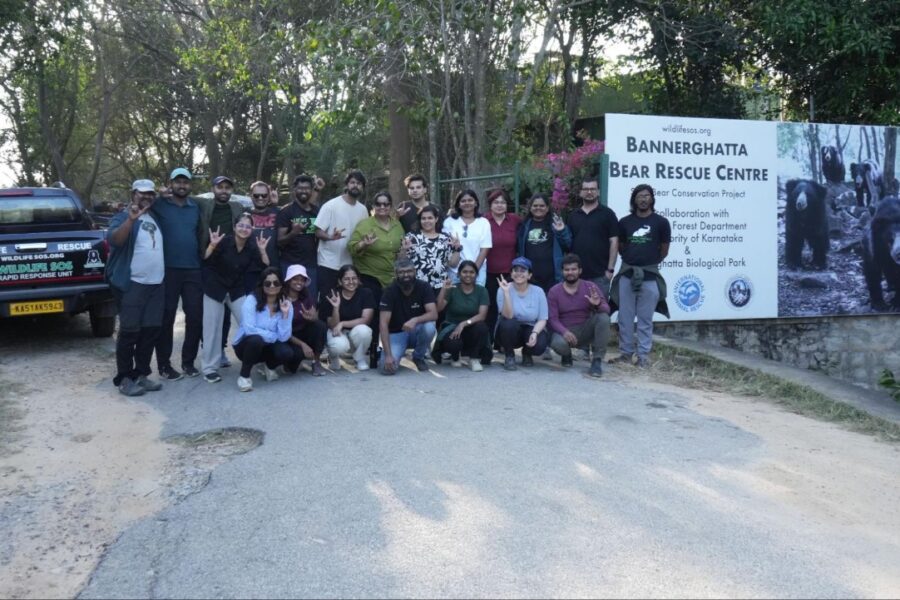–B K Singh, Senior Advisor Wildlife SOS & Retired Principal Chief Conservator of Forests (Head of Forests Force) Karnataka
As a ‘flagship’ species, the protection of tigers in the wild is made all the more vital by the fact that their protection in turn will protect the habitat they live in and by extension all the other wild animals that inhabit it. Mankind has learnt lessons in the repercussions of our actions from natural disasters like floods, landslides and startling depletion of perennial flow of water in rivers and their tributaries from catchment areas, forcing upon us the realization of the importance of protecting forests. And if the tiger is to be protected, the forests must be too, and vice versa.
The National Tiger Conservation Authority (NTCA) instituted by the Ministry of Environment and Forests, Government of India has come a long way in supporting tiger conservation in what have been declared Tiger Range states of this country with each of these states notifying additional Tiger Reserves – forest area identified as prime tiger habitat and declared protected by Indian law – bringing the number of Tiger Reserves in India upto 48. Officers and Policy Makers across the states have extended cooperation and made this expansion possible.
To ensure adequate protection of the species and these reserves, the Indian Wildlife (Protection) Act 1972 has been amended to include a chapter on the NTCA. Along with core areas of the Tiger Reserve, buffer areas are also notified around them, which are mostly taken from adjoining territorial division, and detailed conservation plans are devised and implemented for each – the Core, buffer and critical wildlife corridors – in many Reserves. Unfortunately, Buffer areas are generally human-dominated, making them prime locations for tiger conflict, putting at risk both man, and animal. Alternate livelihood options for the people and proper education & awareness campaigns in favor of conservation are much required and to an extent carried out in buffer areas.
To further prevent conflict, subsequent amendments in the Wildlife (Protection) Act, 1972 also emphasize that Tiger Reserves are inviolate areas to be kept free from human and cattle population. Relocation of families from the core area of the Tiger Reserve is the most important program supported by the NTCA in this regard. Many villages across the states are relocated which has helped in revival of ungulate population on which tigers depend for prey, thereby boosting populations of tigers and co-predators.
With all the above mentioned efforts, the tiger population has been made additionally secure in nearly 20,000 sq km of forest areas of the country. The area under tiger occupancy, which claimed an astounding area of 1,00,000 sq km about hundred years ago, is now restricted to only 20,000 sq km. Due to an explosion of human and cattle population, the forest areas are diverted for development projects resulting in loss and fragmentation of habitats and corridors.
The All India Tiger Estimation, conducted once every four years, has already been conducted thrice i.e. in 2006, 2010 and 2014. The mean value of the estimated tiger number as observed in this exercise was 1400, 1700 and 2200 respectively. Although there is an increasing trend with regards to tiger numbers, the area occupied by tigers continues to decrease in areas where it has not stagnated.
If the area is stagnant and the tiger number is increasing, there will be more tigers per unit area which would again contributes to human tiger conflict. Tigers being territorial animals, in congested situations, are either killed or pushed out on the fringes of the reserves. Especially when young males establish their home ranges, older ones get pushed out closer to human dominated areas where they come in conflict. Depending upon the quality of habitat and prey density, a particular tiger reserve can hold at the most 10 to 18 tigers per 100 sq km. The maximum tiger density in Bandipur and Nagahole Tiger Reserves of Karnataka is 10 to 12 tigers per 100 sq km while that of Corbett in Uttarakhand, Kanha of Madhya Pradesh and Kaziranga of Assam can have 16 to 18 tigers per 100 sq km.
In view of these limitations, the NTCA laid down several guidelines for mitigating tiger conflict with well established protocols for capture of conflict tigers, rescuing orphaned cubs, post mortems etc. There are reports from many areas regarding the conflict leading to death of human and domestic cattle. Forest officers are under increasing pressure to deal with these cases.
Conflict does not always involve tigers killing human beings or snatching livestock – often villagers target and kill the tiger in retaliation. When tigers kill cattle, they sometimes leave a portion of the feed for a second feeding. It is this habit of tiger which is exploited by the villagers, who poison the carcass to kill cattle-snatching predators.
Poaching of tigers for body parts and skin is also prevalent in many states especially in the northern and central part of the country. Often the accused caught on the scene are not kingpins or controllers of the trade, and hence rarely does the interrogation bust the syndicate. It is heartening to note that the Courts are more and more sensitive in these cases and the conviction rate is improving.
The Management in all parts of the country is conscious of the protection of tiger, co-predator, prey animals and habitats. There is constant effort to relocate families residing inside tiger reserves so as to make the area inviolate. Making the area inviolate is the most important component of the management. The experiments have revealed that for the ideal tiger reserve we need 800 to 1200 sq km of inviolate forests with adequate prey density. Such areas would be occupied by 70 to 75 tigers including 20 to 25 breeding females. Even if there are one or two losses per year in such areas, the tigers would not vanish.
The 29th of July marks the commemoration of International Tiger Day, and a rededication to the cause of conservation of this species that has come to be a proud representative of not just India’s astounding natural wealth and heritage, but of the many problems that plague Indian forests and wildlife – as well as the people trying to protect them.




